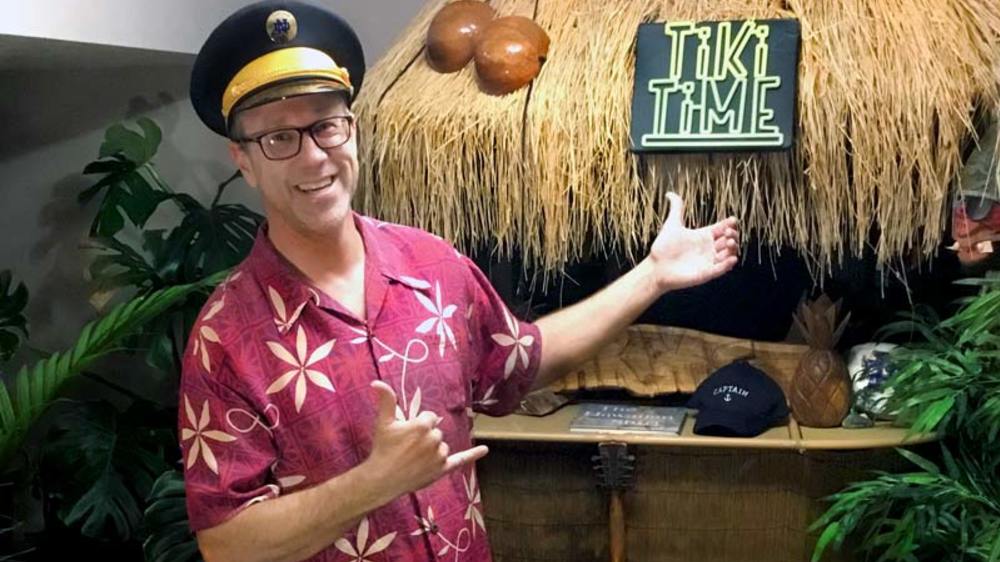Chad Harms' Hawaiian shirt collection was made for such a time as this.
When the coronavirus pandemic shifted all of the University of Notre Dame’s courses online in March, faculty members had to move fast to revamp their syllabi for digital delivery. And so Harms, an associate teaching professor at the Mendoza College of Business, donned a floral patterned button-up shirt and got to work.
Harms is no stranger to the challenges and opportunities presented by online learning. Prior to joining Mendoza’s Management & Organization Department in 2010, he studied effective virtual schooling communication as part of a U.S. Department of Education grant. From his research, he knew that how he framed the mid-semester shift would influence how students in his "Foresight in Business and Society" undergraduate classes connected with one another and their work.
"My primary goal is to keep my students on track toward completing their semester," he says, explaining how online learning requires faculty members to take additional steps to create a learning environment that could keep students focused and connected.
As a way to deliver course material in an engaging and flexible format, Harms started recording episodes of "TIKI Time," a mini talk show filmed on a set, complete with thatched roof hut, that he constructed in his home out of discarded or garage sale items. TIKI, he explains, stands for “Technologically Integrated Kinetic Interface." Each episode features a different Hawaiian shirt — Harms has about 38 to choose from — music, guest speakers and an adorable pet or two.
He shifted the course schedule to weekly requirements that allow students flexibility in completing assignments and quizzes. This also encourages more back-and-forth with students regarding questions about the material. He schedules meetings via Zoom for additional communication and accountability.
“As instructors, we must do our best to provide our students the leadership and guidance they genuinely need,” he says. “Simplifying complex assignments, overtly stating expectations and increasing communication — both asynchronous and synchronous — will provide them reassurance, help them learn the necessary content, and motivate them to finish the semester, and all of their classes, positively.”
The unfolding COVID-19 crisis has offered a sobering pedagogical opportunity in a course focused on applying business foresight techniques such as systematic trend analysis and scenario development to complex societal issues. Harms incorporated a 2007 report from the Center for Infectious Disease Research & Policy at the University of Minnesota that lays out a flu pandemic worst-case scenario into his course material on the first day back. “Our students have to grapple with ambiguity about the future, and the current situation emphasizes the value a unique class such as Foresight offers this upcoming generation of business and community leaders,” he says.
Student feedback to the new class format has been positive. “I just wanted to say that was the best thing I have ever seen,” junior business analytics major Keagan McLaughlin wrote in an email.” You have outdone yourself, and the episode definitely brightened my day during this troubling quarantine.”
While Harms has done his best to make online coursework relevant, entertaining and a little less painful, he knows nothing can replace being on campus together. “I sympathize with the students,” he says. Some of his favorite springtime student life traditions include the Fisher Regatta, a signature dorm event involving homemade boats racing across St. Mary’s Lake, and (of course) the Hawaii Club Annual Luau.
“I know I can't replace those memories,” he continues, “but I can do my best to help them complete their projects without too much anxiety and hopefully have some fun along the way.”
